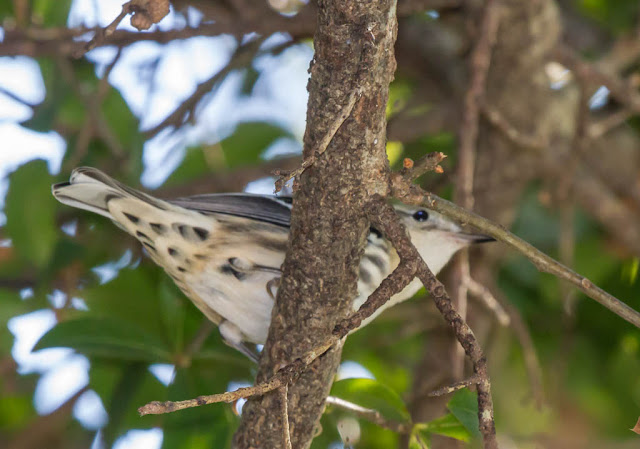Sitting on our deck puts us eye-level with many of the songbirds that frequent our oaks to glean insects for breakfast.
Black-and-White Warbler
This warbler is the only member of the genus Mniotilta. The genus name means "moss-plucking," a reference to its habit of probing bark and moss for insects.
A winter visitor for us.
A new yard bird for us. This is the first Carolina Chickadee we've ever had in our yard (or that we've ever seen on Snell Isle for that matter)
As the range map shows, they tend to "just" make it into our area.
In winter, these chickadees tend to live in flocks of two to eight birds and defend areas against other flocks.
Tufted Titmouse
Unlike many chickadees, these birds do not gather in larger flocks outside the breeding season. Instead, most remain on the territory as a pair.
We tend to see two at our feeder not infrequently.
Little Blue Heron
Adult (Juveniles are white)
These birds are stand-and-wait predators. They watch the water for fish and other small morsels, changing locations by walking slowly.
They nest in trees, usually among other nesting herons and wading birds.















No comments:
Post a Comment